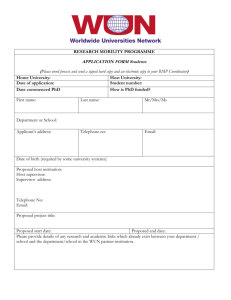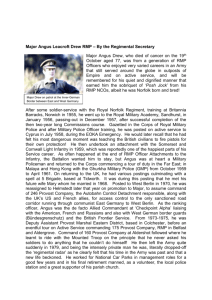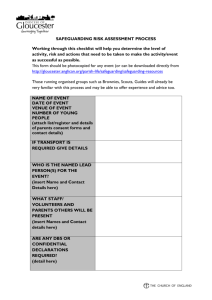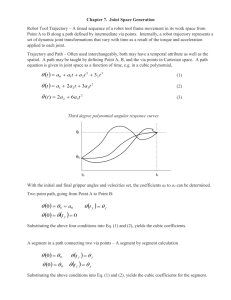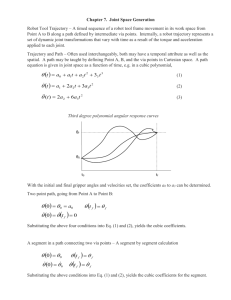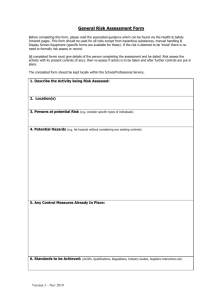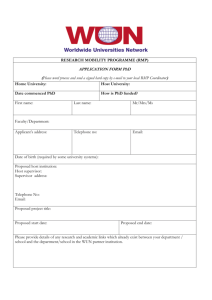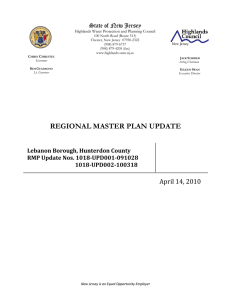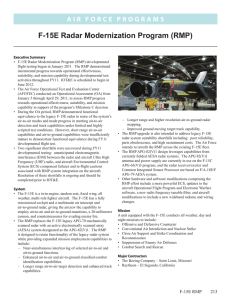ECU Risk Management Plan
advertisement
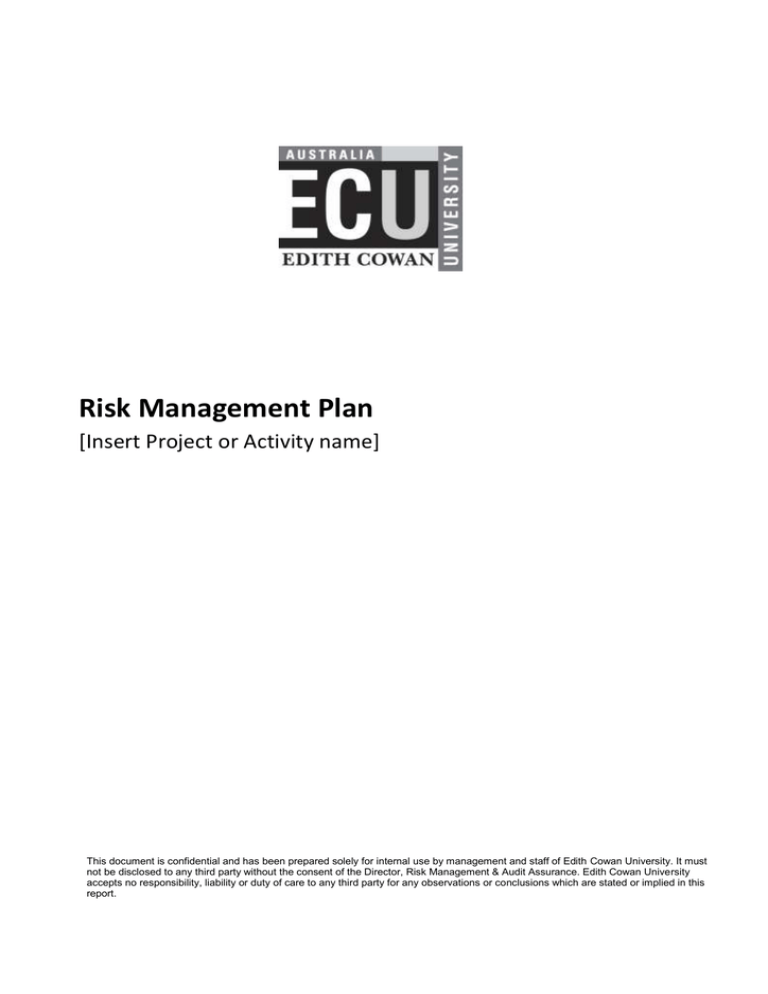
Risk Management Plan [Insert Project or Activity name] This document is confidential and has been prepared solely for internal use by management and staff of Edith Cowan University. It must not be disclosed to any third party without the consent of the Director, Risk Management & Audit Assurance. Edith Cowan University accepts no responsibility, liability or duty of care to any third party for any observations or conclusions which are stated or implied in this report. NOTE: Text in this font is included as a guide for document authors and is to be deleted in the final version. Italicised text in the main document is for guidance only and should be substituted with the relevant project data and re-formatted as normal text. Document Location [Indicate where the document will be located. This will assist staff with accessing or retrieving the document. Areas where the document may be located include; Faculty/School web page, Office of Research and Innovation, Centre.] Revision History The following updates have been made to this document: Version Revision Date Summary of changes made Changes made by. Approvals This document requires the following approvals: Signed approvals are filed in the Management Section of this document. Name Title/position Date of approval Distribution This document has been distributed to: Name Title/position Version: <Insert version> Issues: <Insert issue date. Printed: 22/03/2016 8:29:00 PM Date of issue Table of Contents 1. Introduction ....................................................................................................... 4 2. Context............................................................................................................... 4 3. Roles and Responsibilities .............................................................................. 4 4. Communication and Consultation ................................................................... 4 5. Risk Identification and Analysis ...................................................................... 4 5.1. 5.2. 5.3. 5.4. 5.5. 5.6. Risk Identification................................................................................................ 5 Risk Analysis ....................................................................................................... 5 Risk Evaluation .................................................................................................... 5 Risk Treatment .................................................................................................... 6 Monitoring and Review ....................................................................................... 6 Risk Reporting ..................................................................................................... 6 6. Documentation .................................................................................................. 7 7. Approval ............................................................................................................ 7 Read this first This Risk Management Plan (RMP) is produced as a stand-alone document for a University activity/event, or as a component of a Project Management Plan (PMP). It describes whom, what, when, where, how and why of the risks to your project or activity, and include such aspects as: Who: o Are the stakeholders; o Have various responsibilities within the project or activity; o Is responsibility for approvals; o Ensures that the risks and controls are being monitored. What risk management (identification, analysis, evaluation, treatment, monitoring) activities are being conducted for the management of risk to ensure compliance with ECU Risk Management Policy and the AS/NZ ISO 31000:2009 – Risk Management – Principles and Guidelines. This RPM is not to be a generic plan, but is to ensure that specific information is provided to the project team or activity participants. In doing so, the risk management activities will be clear, unambiguous, understood and actioned by all parties. A practical and well thought out RMP will define how you are to deal with risk. Moreover, it will help to create a culture of sensible risk awareness and management of your project or activity. 1. Introduction The introduction addresses the purpose and objectives of the Risk Management Plan (RMP), and should provide a brief summary of the project or activity. 2. Context The context has to clearly outline the project or the activity’s objectives and scope for each stage. The context needs to provide a description of any arrangements, including political, legal, or international influences that could affect or assist in the management of the risks. There should also be clear linkages to the Universities Strategic Priorities, Functional Plans and/or Faculty/Centre Annual Plans Furthermore, the context needs to detail any relationships and/or interconnections whereby the project or activity will have an effect upon safety, environment, or regulatory frameworks 3. Roles and Responsibilities The RMP is to detail the organisation involved in the project and the activity team responsible for managing the risks. This should include the person/s responsible for the following: Project or activity sponsor; Oversighting the risk management process; Identifying, and assessing risks to the project or activity; Determining or approving; o The risk assessment; o Implementing risk treatments; and o The review and monitoring of associated risks. Roles within the project/activity need to be defined to ensure that that risk owners are aware of their risk management responsibilities for the duration of the project/activity. 4. Communication and Consultation The RMP is to identify the internal and external stakeholders and the mechanisms for engaging them. At this point project/activity managers should document stakeholders and other relevant contact details. 5. Risk Assessment The following risk management process is conducted in accordance with the AS/NZ ISO 31000:2009 – Risk management – Principles and Guidelines, and ECU’s Integrated Risk Management Policy. 5.1. Risk Identification The RMP is to describe the methods used to identify the risks. This should include who was involved; sources of information; and the processes used. The aim of this step is to generate a list of risks, based upon the project or activity that might create, enhance, prevent, accelerate or delay a successful outcome. ECU has pre-defined risk categories that will assist you in providing structure in the risk identification process. Once you have identified the risks they need to be recorded in an RMAA Risk Register Template. The following link will redirect you to the appropriate resource: http://intranet.ecu.edu.au/staff/centres/risk-management-and-audit-assurance/riskmanagement/risk-management-tools-and-templates 5.2. Risk Analysis Analysing the risks previously identified will build an understanding of the risks, and needs to take into consideration the cause and source of the risk, existing treatments/controls in place, and the positive and negative effects of the consequences and the likelihood of the consequences occurring. Determining the outcomes (Likelihood/Consequences) of an event can be achieved through a number of processes. This can include either or a combination of the following: Experience and exposure in the industry or organisation, Previous outcomes from an event or events, Event modelling, and/or Extrapolation of available data from studies, or statistics. Analysing the risk for the RPM is to be conducted utilising the Risk Assessment Matrix at Appendix1. Once the level of risk has been determined, it is to be documented within the RMAA Risk Register. 5.3. Risk Evaluation Evaluating the process assists in making decisions based upon the outcomes of the risk analysis. The RMP is to describe the procedures for evaluating and prioritising risks to the project or activity. This will assist in identifying which risks require further treatment and the priority for treatment implementation? In some cases, risks may be low and not require implementing treatments. Whilst other risks will need to be considered for treatment, this will depend upon the level of risk tolerance. The table below can be utilised as a means to illustrate the number and level of risks that have the potential to influence the outcome of the project or activity. Risk Level Number of risks identified Low Moderate Substantial High Extreme Note: Where a RMP is developed for Strategic Projects and/or International Programs the qualitative and quantitative risk score from the Risk Register must be included. This will ensure that approving Committees or Council have oversight of the risks. 5.4. Risk Treatment The RMP is to describe the risk treatment procedures. The development of treatment measures will minimise the impact of an identified risk. Risks identified as Moderate or above require the implementation of treatment measures; these measures include: Avoiding the risk by changing aspects of the project or activity to eliminate the threat. This can be achieved by clarifying requirements, obtaining more information, improving communication, or obtaining expertise. Take the risk by informed decision or increase the risk in order to pursue an opportunity. Removing the source of the risk. Sharing the risk with another group or party. Mitigating the risk by reducing the likelihood or the consequences to an acceptable level. When a risk has not been treated in a way that entirely eliminates it, then indicators of the risk eventuating may need to be identified. Indicators identified will need to be included as part of this RPM to ensure that members of the project are conscious of any change. 6. Monitoring and Review Monitoring and reviewing the project or activity’s risks needs to be an ongoing element of the project/activity life cycle. The RMP is to detail when the timeframes for when this plan is to be reviewed; reviews can be regular, periodic or ad hoc. Whatever frequency is determined, it is to be documented in this plan. Monitoring and review is to ensure that the mechanisms for reporting to stakeholders remain current. 7. Risk Reporting The RMP is to detail the processes for reporting risks, including the reporting mechanisms used and timeframes. In addition, any emerging risk identified during the project or activity life cycles are to be included into the RMP. 8. Documentation The results of the risk process are to be included in the Risk Register Template which is to be attached to this RMP. Approval I (Name) ……………………….., (Position) …………………………………, being the project/activity sponsor approve this Risk Management Plan and supporting Risk Register. (Insert signature block) I (Name) ……………………….., (Position) …………………………………, being the project/activity approver endorse this Risk Management Plan and supporting Risk Register. (Insert signature block) Appendix 1 – Risk Assessment Matrix DELEGATIONS Low Moderate Substantial RESPONSIBLE OFFICER No injuries First aid treatment Medical treatment Death or extensive injuries < $50K or 5% of Operational Budget $250K - $3M or 25% of Operational Budget $3M - $10M or 50% of Operational Budget Little or no impact on assets $50K - $250K or 10% of Operational Budget Minor loss or damage to assets Major damage to assets Significant loss of assets Complete loss of assets < 1/2 day 1/2 - 1 day 1 day to < 1 week 1 week - 1 month > 1 month Unsubstantiated, low impact, low profile or no news items Substantiated, low impact, low news profile Substantiated, public embarrassment, moderate impact, moderate news profile Substantiated, public embarrassment, very high multiple impacts , high widespread news profile, third party actions > 50% variation to relevant PI's Injuries Staff Financial Loss HOS/Manager/ Associate Dean Executive Dean/Dean/ Director Asset Loss Interruption to Services Multiple Deaths or severe permanent disabilities > $10M or >50% of Operational Budget High Chancellery Member Reputation & Image Extreme V-C Academic Performance Up to 5% variation to relevant PI's 5 -10% variation to relevant PI's 10 - 25 % variation to relevant PI's Substantiated, public embarrassment, high impact, high news profile, third party actions 25 - 50% variation to relevant PI's CONSEQUENCES Minor Disruptive Serious Critical Catastrophic Score 1 2 3 4 5 Rare (<5%probability) 1 1 (Low) 2 (Low) 3 (Low) 4 (Low) 5 (Moderate) Possible (5-10%probability) 2 2 (Low) 4 (Low) 6 (Moderate) 8 (Moderate) 10 (Substantial) This event may occur more than twice during the life cycle of the activity or during the life of the equipment Occasional (10-25% probability) 3 3 (Low) 6 (Moderate) 9 (Moderate) 12 (Substantial) 15 (High) This event may occur frequently during the life cycle of the activity or during the life of the equipment Likely (25-50% Probability) 4 4 (Low) 8 (Moderate) 12 (Substantial) 16 (High) 20 (Extreme) Expected to occur routinely during the life cycle of the activity or during the lifetime of the equipment Almost Certain (>50% Probability) 5 5 (Moderate) 10 (Substantial) 15 (High) 20 (Extreme) 25 (Extreme) Description Theoretically possible but not expected to occur during the life cycle of the activity or the lifetime of the equipment Possible that it may occur once during the life cycle of the activity or the life of the equipment LIKELIHOOD
